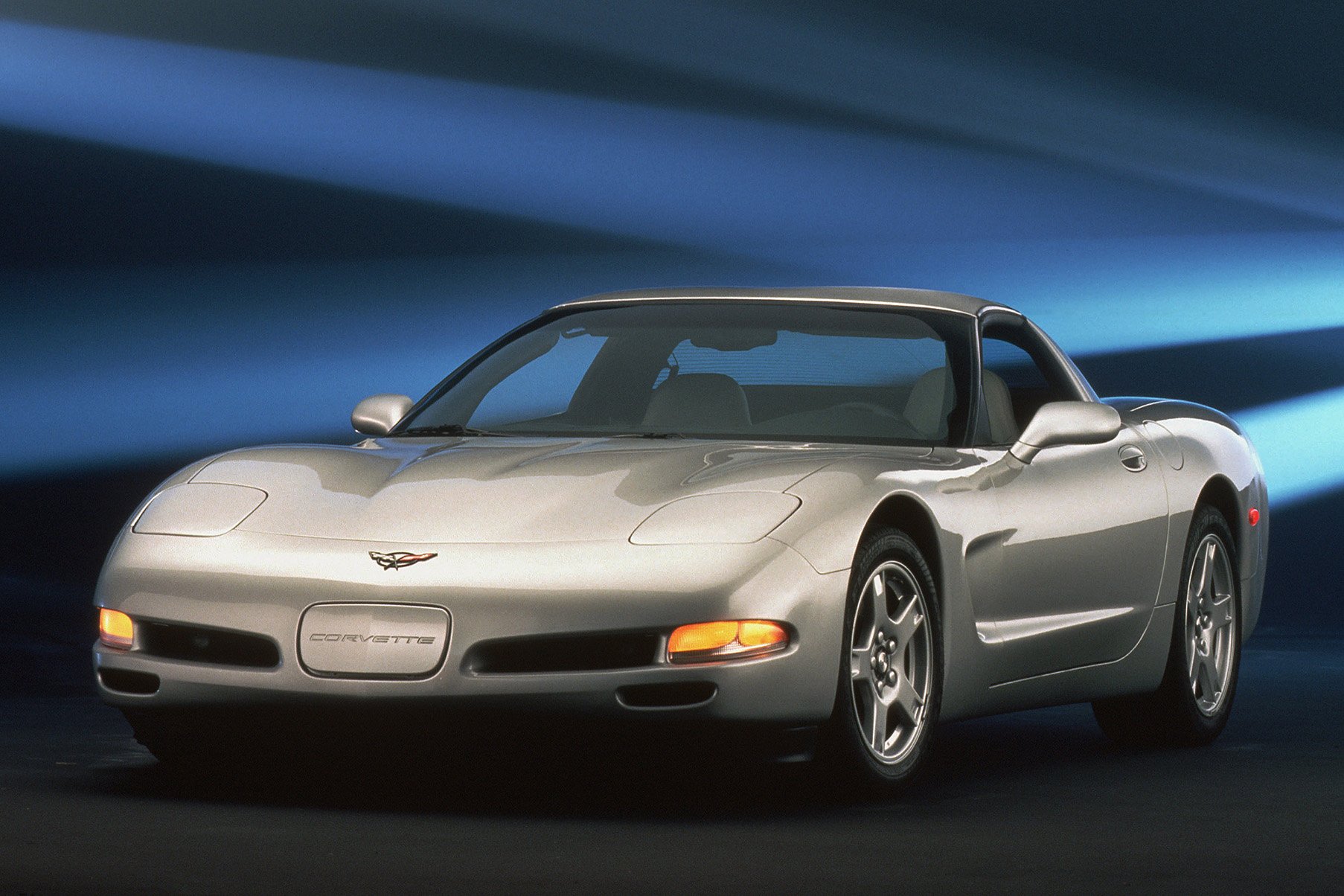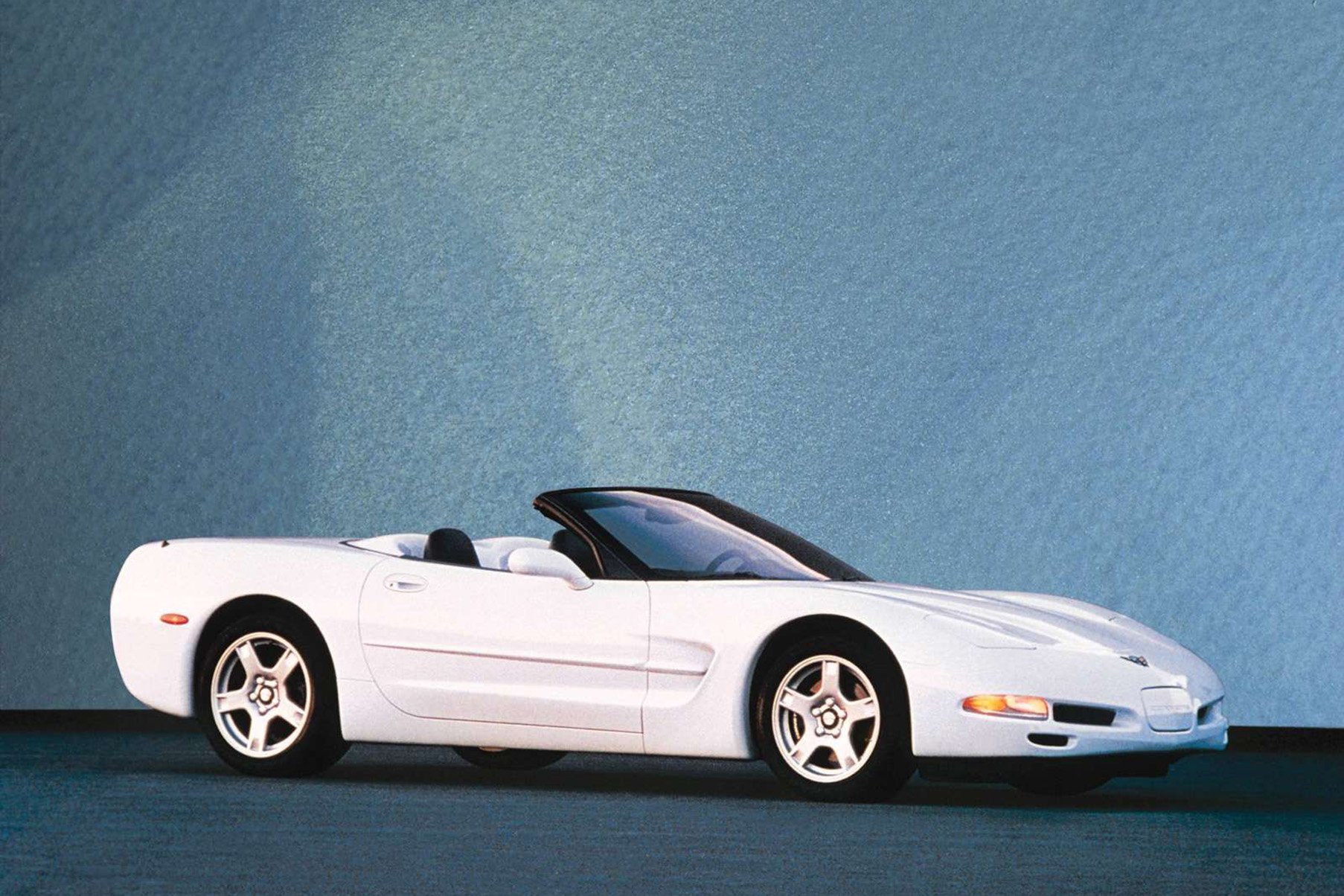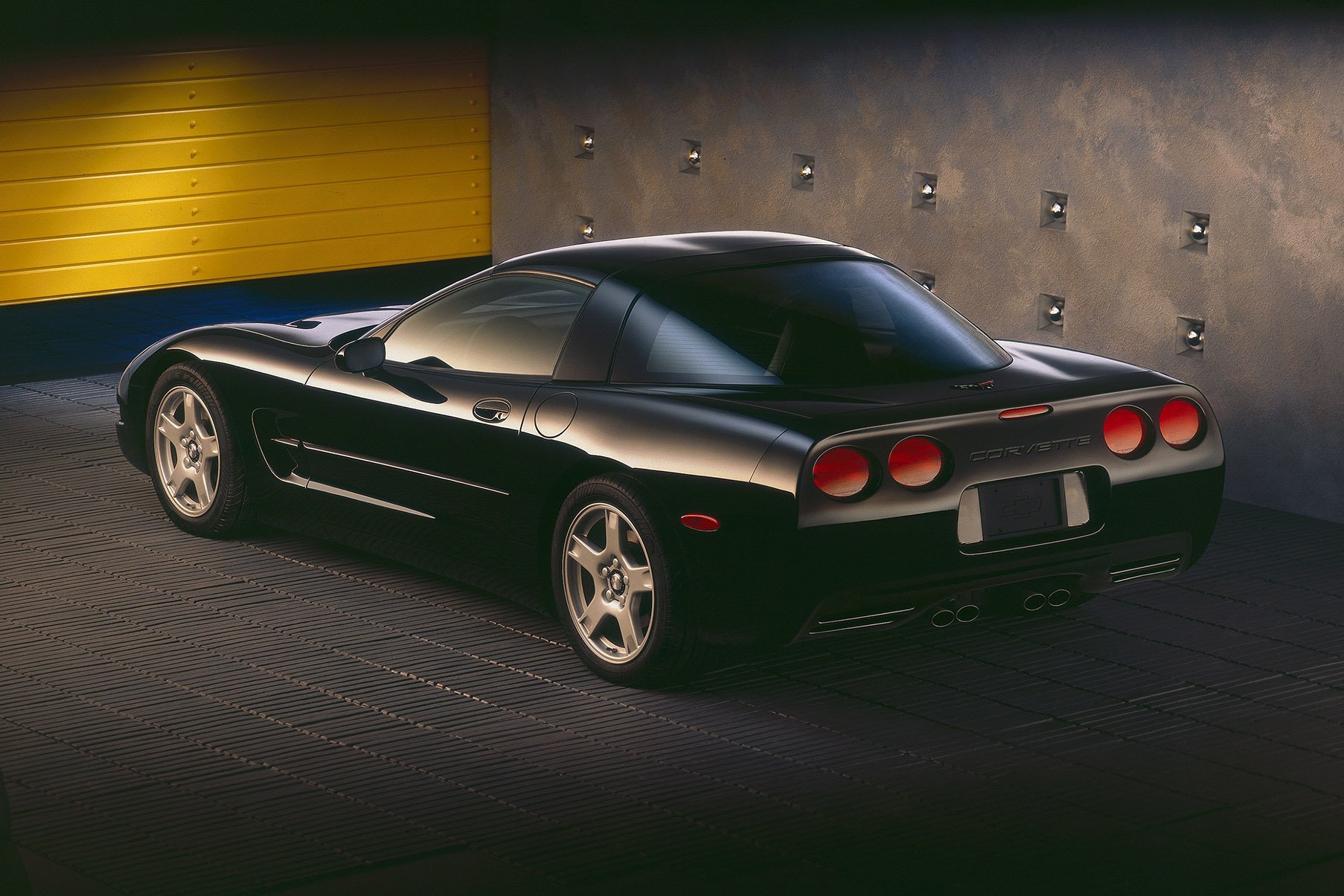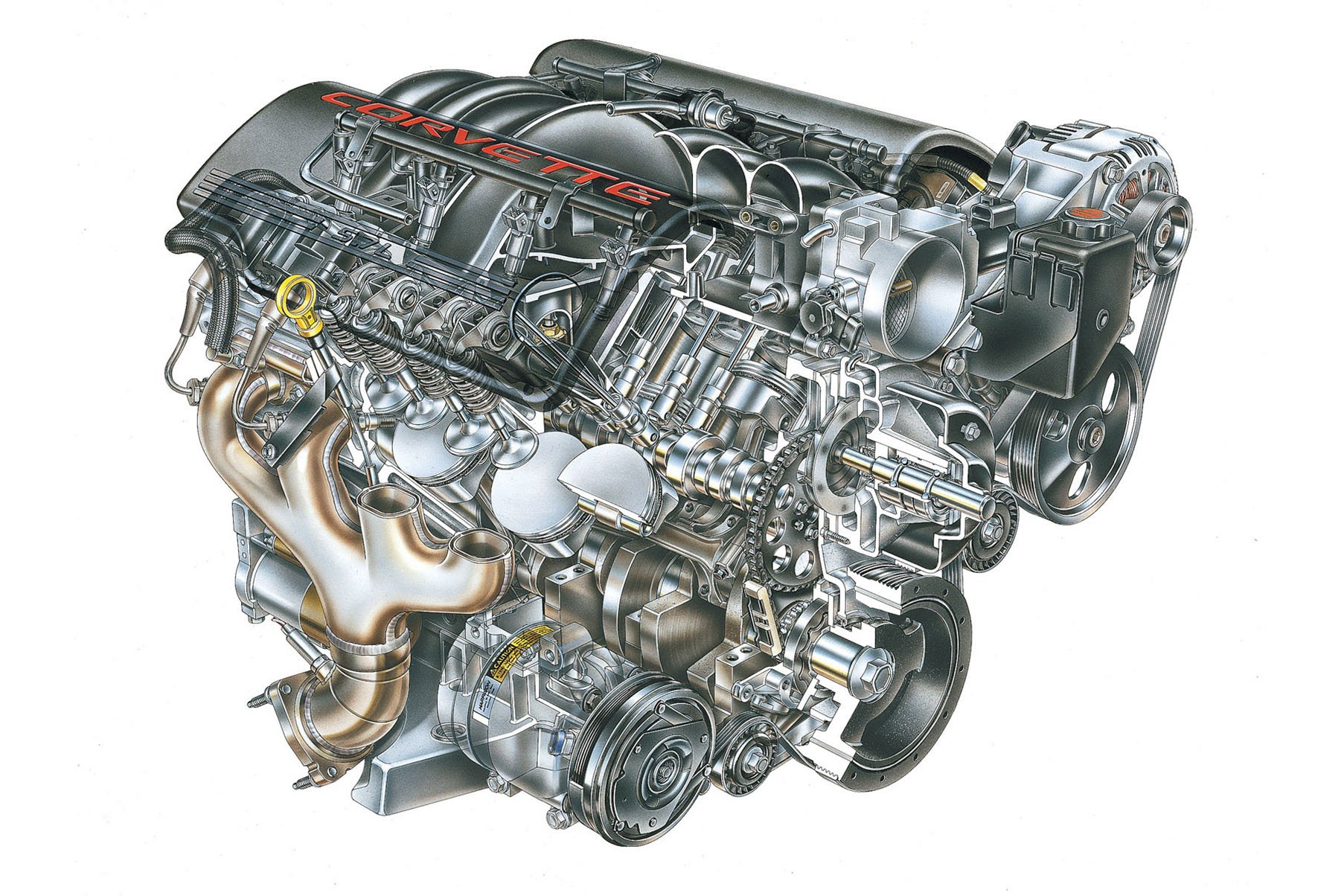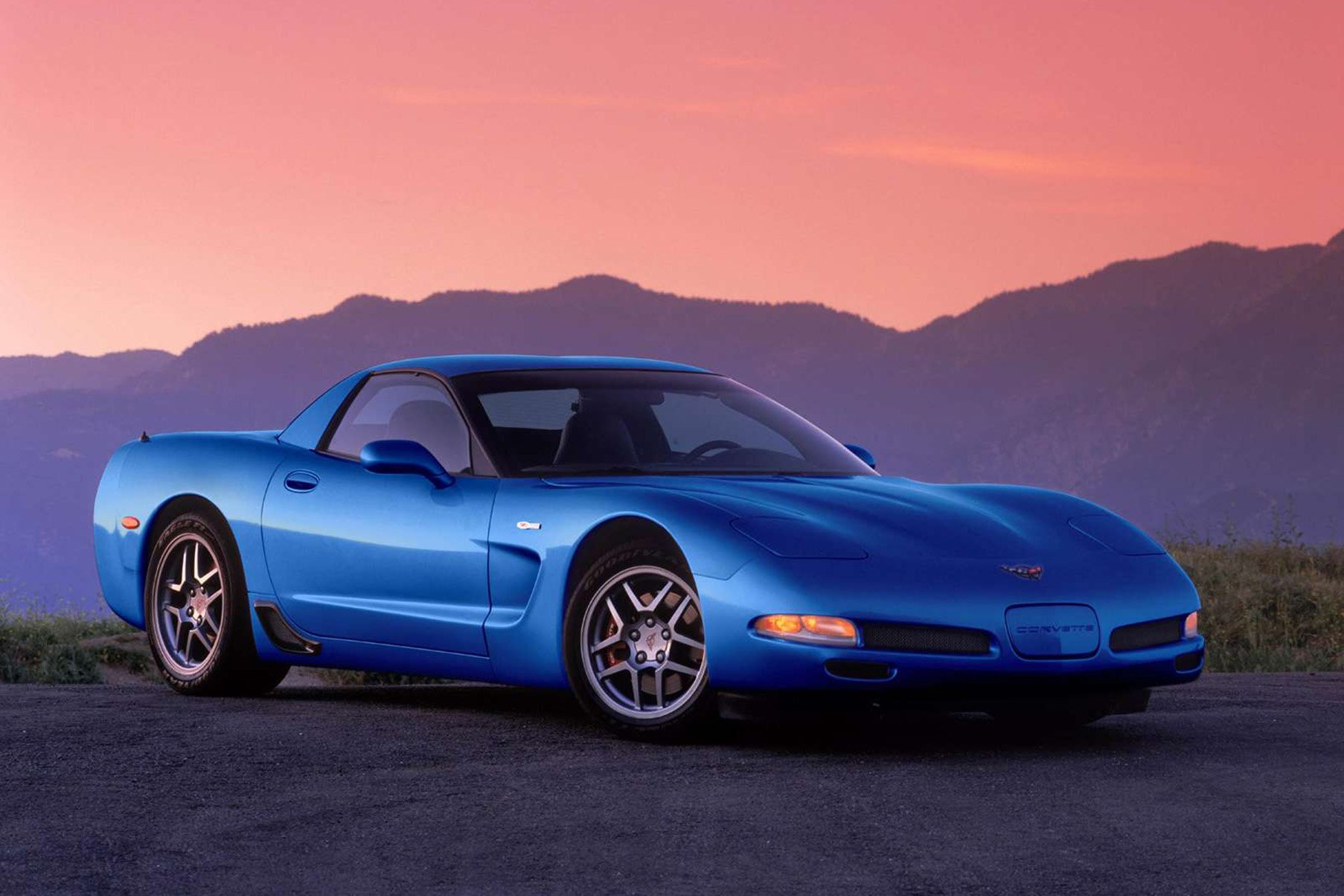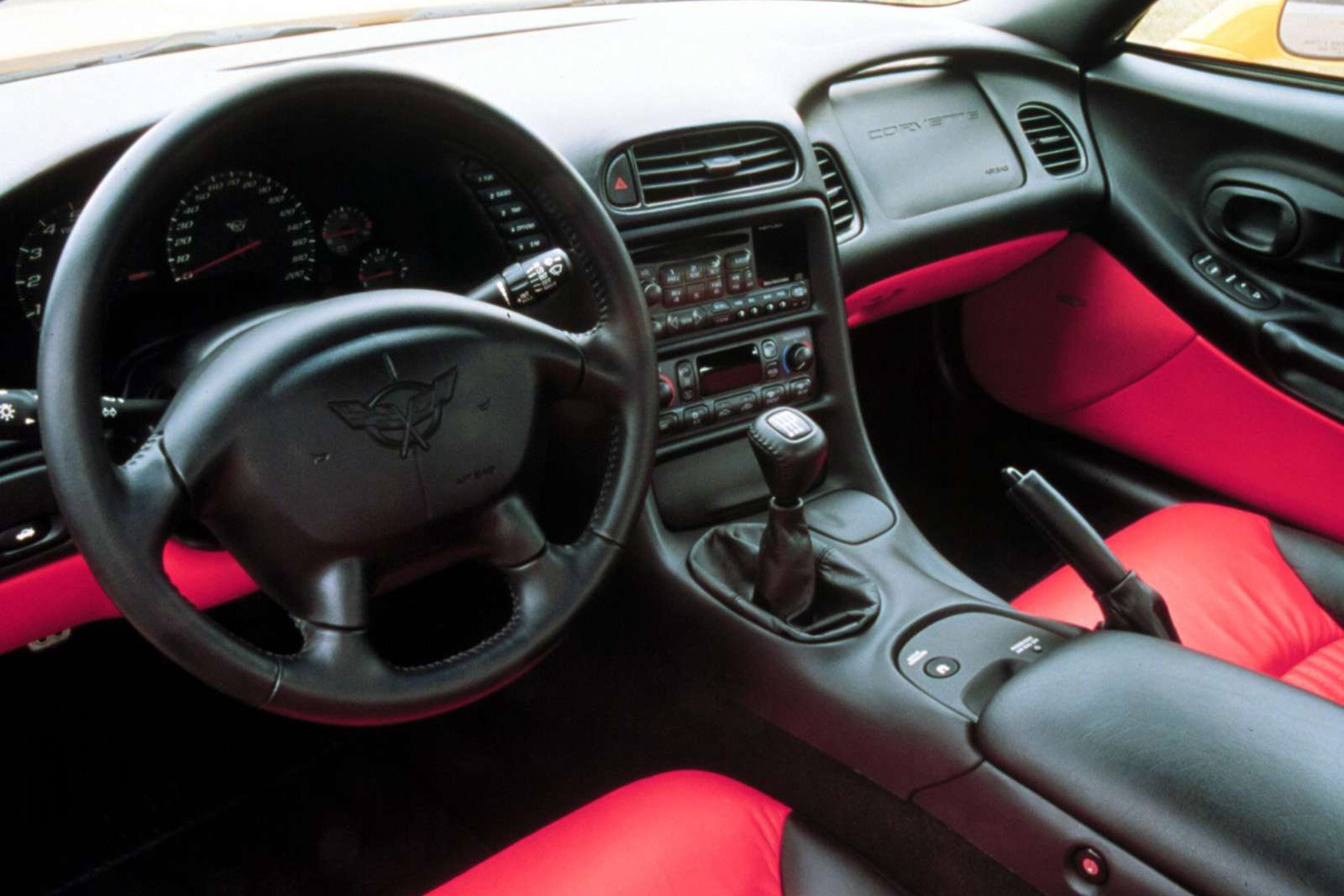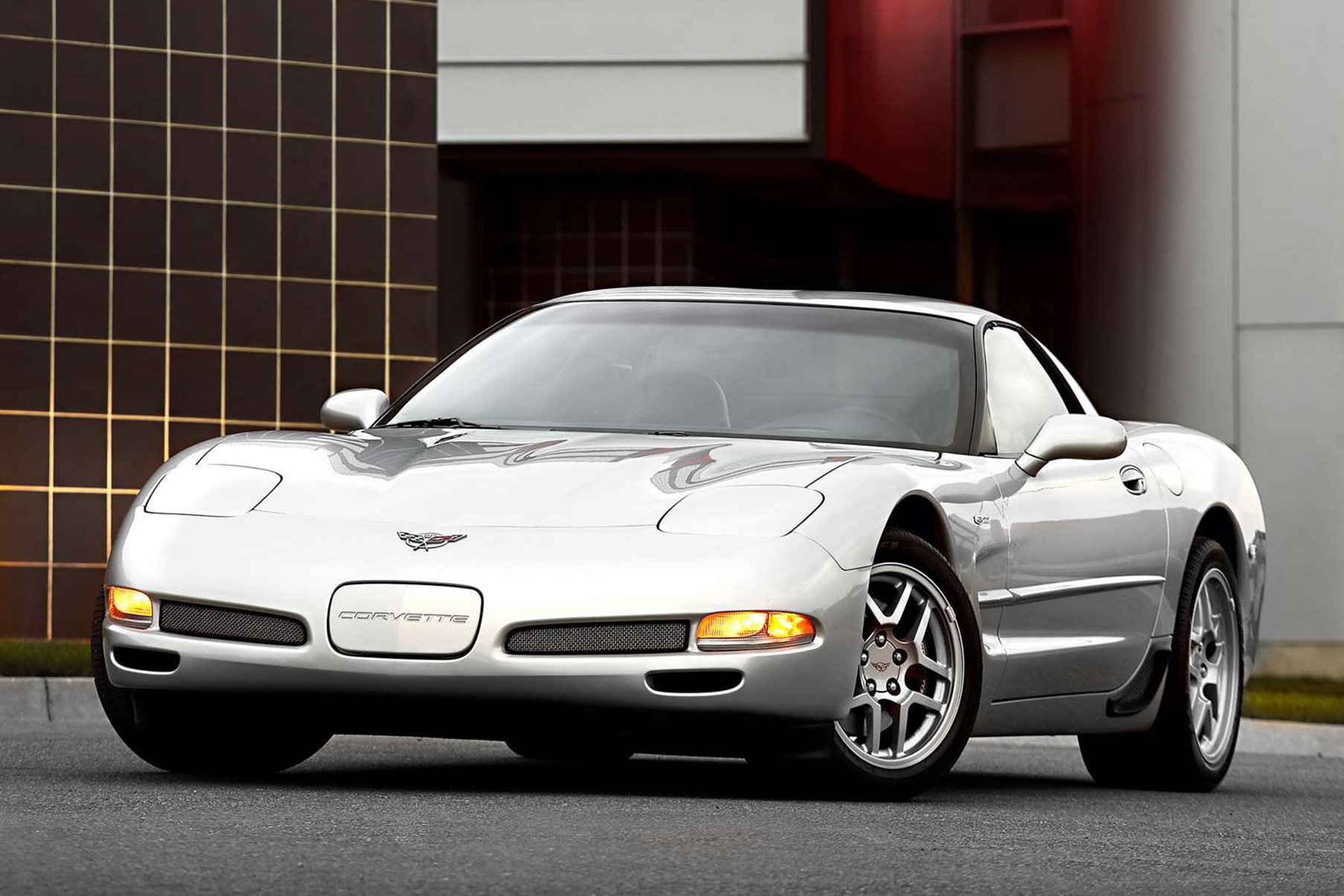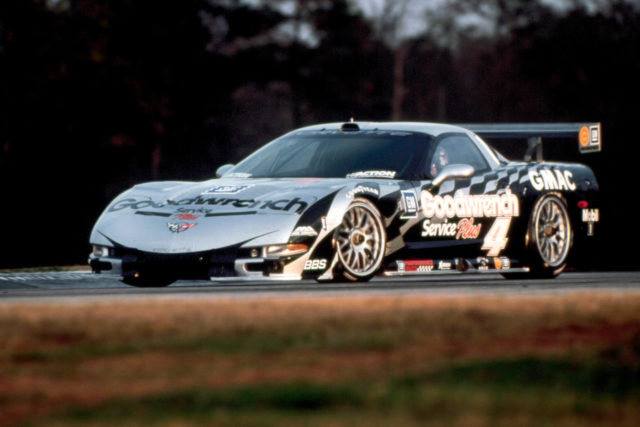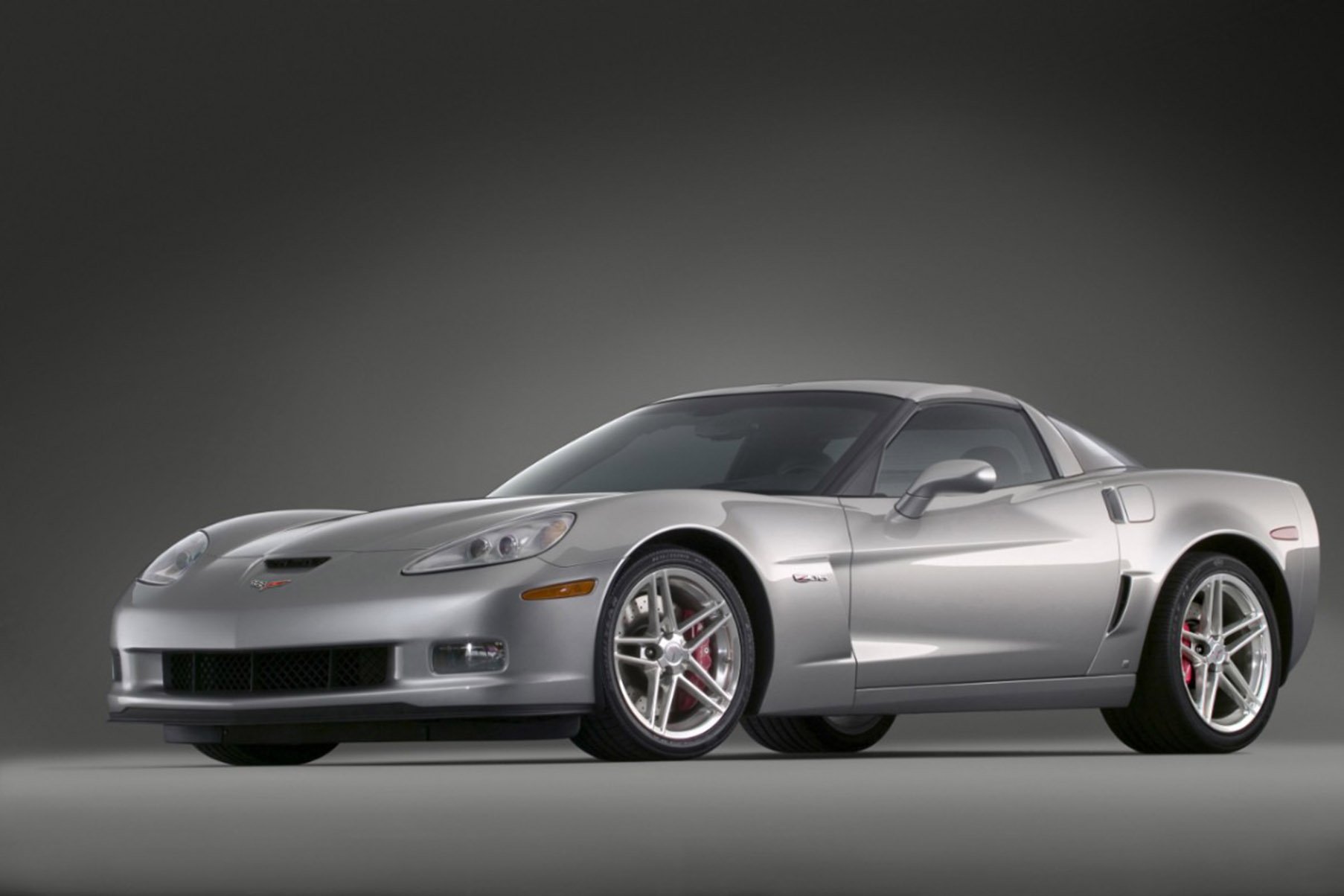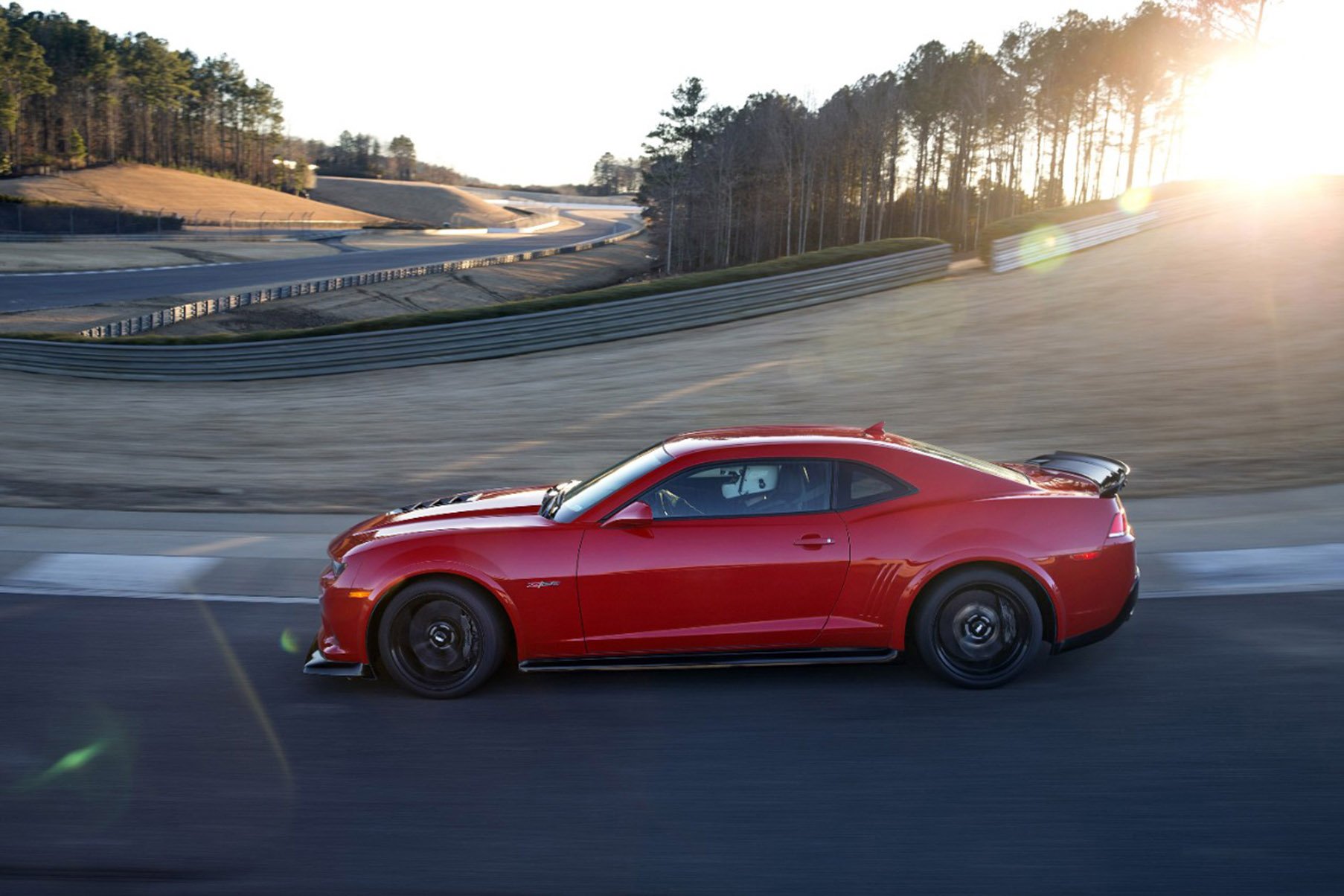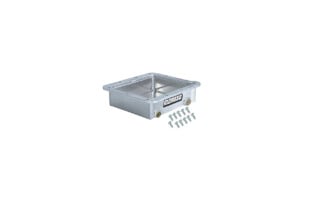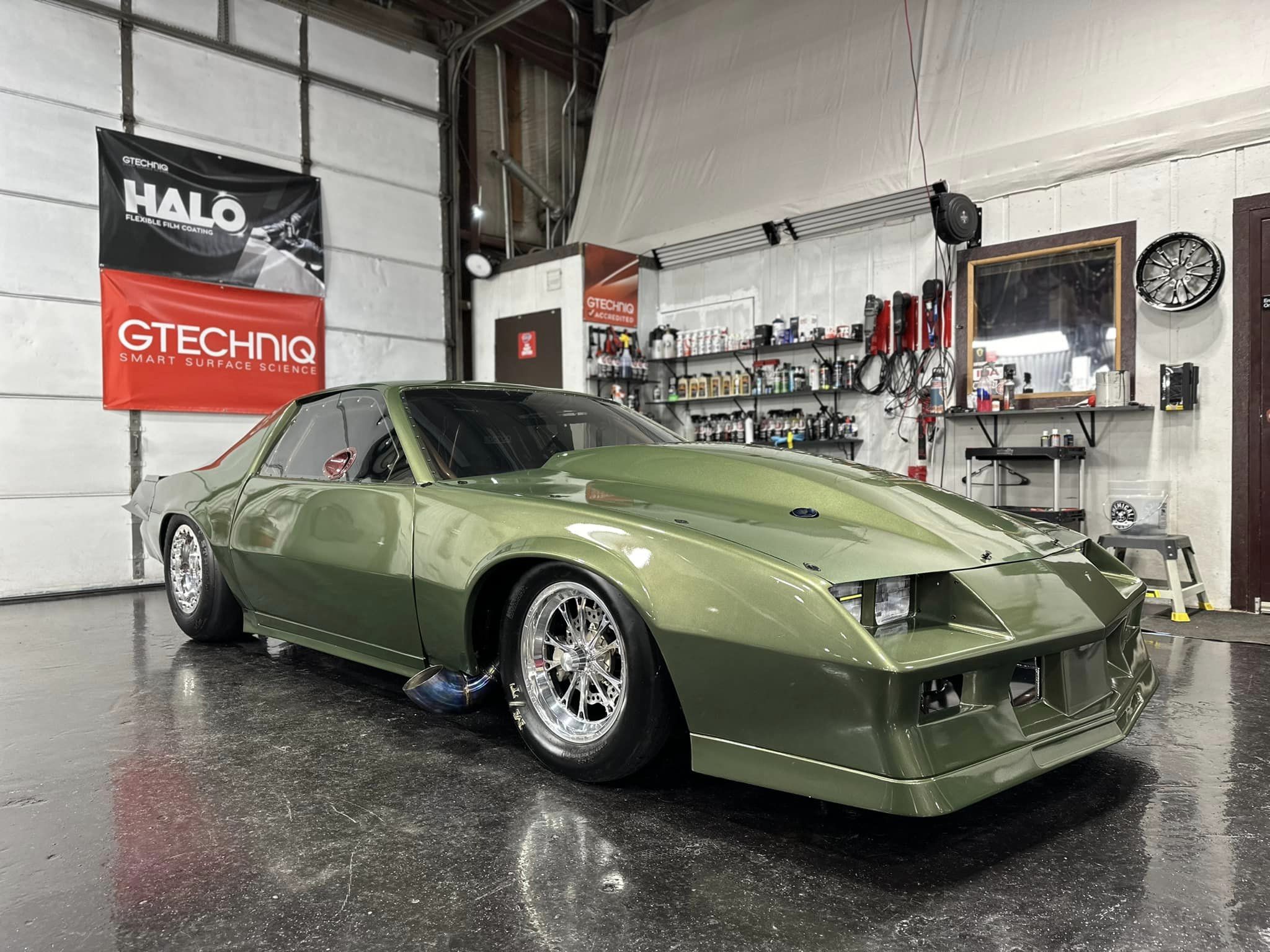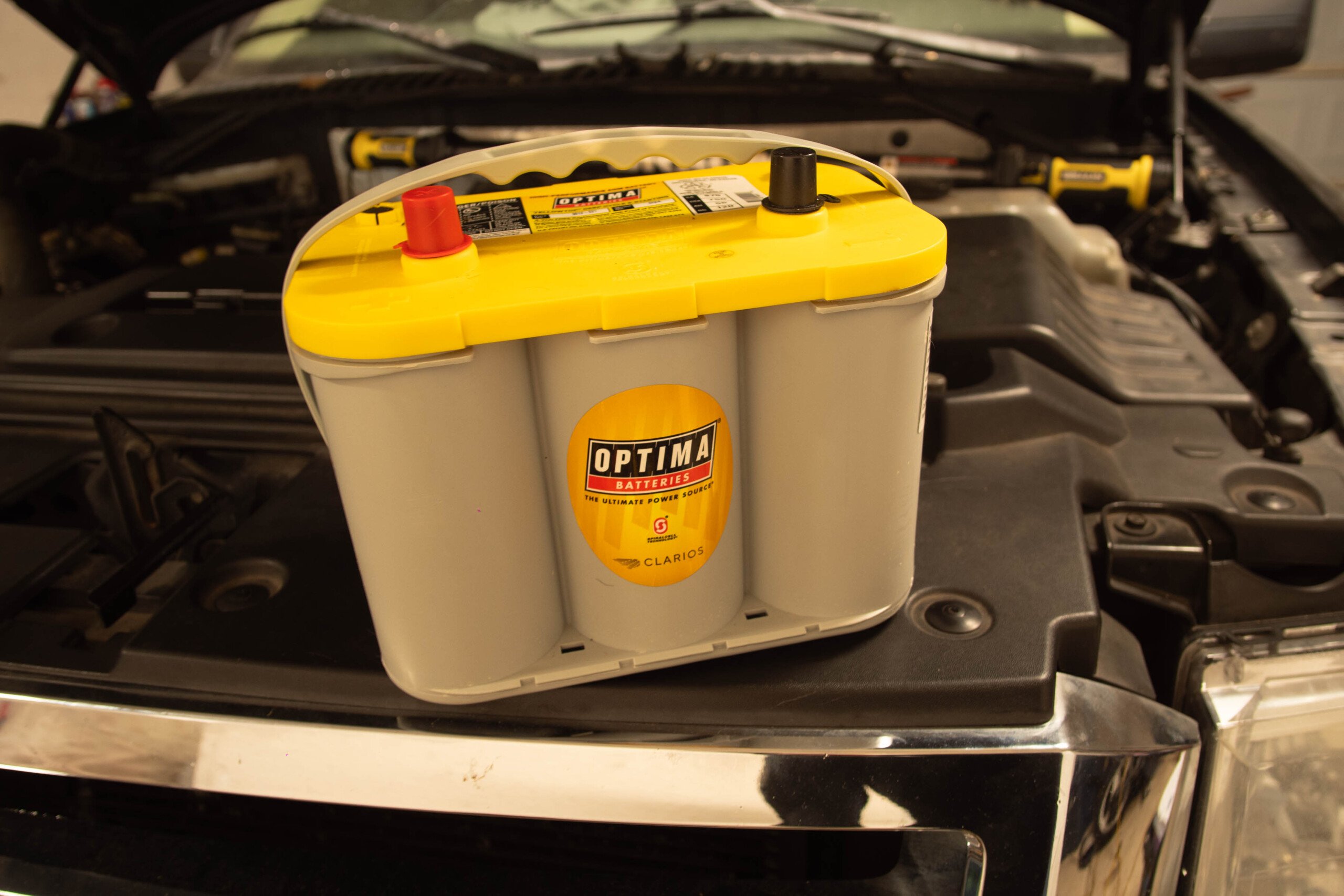 This year marks the 20th anniversary of Chevrolet’s fifth generation sports car. Debuting in 1997, the C5 might have an aesthetic evolution from the C4 but underneath the skin it was a massive departure from the past, one which would see the Corvette modernized for a 21st century world through the most extensive redesign since the first model rolled off the assembly line in 1953.
This year marks the 20th anniversary of Chevrolet’s fifth generation sports car. Debuting in 1997, the C5 might have an aesthetic evolution from the C4 but underneath the skin it was a massive departure from the past, one which would see the Corvette modernized for a 21st century world through the most extensive redesign since the first model rolled off the assembly line in 1953.
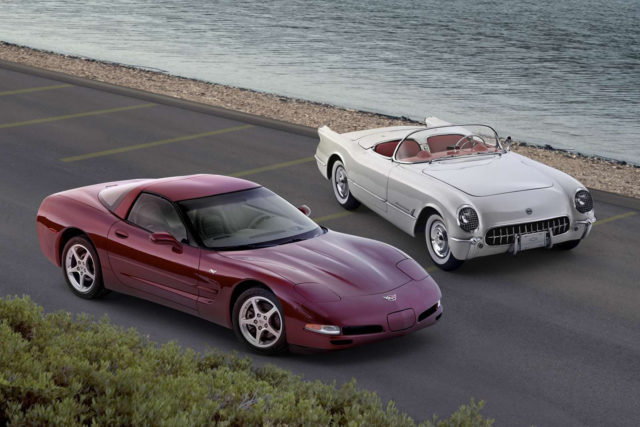
Though its debut was delayed by nearly half a decade, the additional development time was well worth the wait, as the C5 represented the biggest mechanical rethink of the Corvette since the model’s introduction more than forty years prior.
Along with significant improvements to its structure design and chassis, the C5 would also debut a new family of power plants that has become synonymous with modern V8 performance – the Gen III LS engines. These motors have not only seen extensive use throughout GM’s portfolio in the years since, they’ve also become the go-to motor for engine swaps in everything from vintage Camaros to Mazda MX-5s due to their light weight, compact packaging, bulletproof reliability, and ability to make a ton of power with very little effort.
Here we’ll look back at the C5 to get a better sense of all the innovations it brought to not only the Corvette model but the industry as a whole, and see how its potent new motor helped bring modernized small block V8 power to the masses.
Rebooting The Corvette
After nearly a decade and a half on the market, Chevrolet decided it was time to put the C4 out to pasture. It’d had a good run that had culminated with Chevrolet’s “King of the Hill” ZR-1, a version of Corvette that was co-developed with Lotus and delivered supercar-level performance.
But the C4’s production run would continue on well past Chevrolet’s original plan, which was to debut the C5 in 1993 to mark the Corvette’s 40th anniversary. Corporate issues within GM would prevent the Corvette team from hitting that target though, and they would instead debut the car at the 1997 North American International Auto Show in Detroit. Fortunately, this is one of those cases where having patience really did pay off.
When the C5 hit showrooms in 1997 it was available in either targa-style sport coupe or convertible form. The fixed-roof coupe, or FRC as its colloquially known, was initially intended to be a budget-friendly base model, and a V6 power plant was briefly considered during development. However, since it turned out to be nearly 100 pounds lighter than the sports coupe body and 12 percent stiffer as well, the FRC was quickly repositiioned as a performance-focused variant, and would become the body style of choice for the Z06 that was to come.
Though not a complete visual rethink, even from the outside it was clear that this was not some simple refresh of the C4, and the updated bodywork modernized the Corvette’s look significantly while keeping its family resemblance.
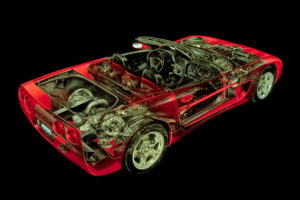
One of the most important changes between the C4 and the C5 was the successor’s all-new frame with a rigid center tunnel design, which provided a massive improvement in torsional rigidity and allowed engineers to relocate the gearbox behind the driver, giving the car a near-perfect 50/50 weight distribution.
It served a functional purpose as well, lowering the Corvette’s drag coefficient substantially from 0.34 to 0.29, the latter making the Corvette among the slipperiest bodies in the industry at the time.
Underneath the bodywork was a hydroformed frame with a rigid center tunnel design that provided a massive increase in torsional rigidity, which not only greatly reduced the rattles and squeaks that the C4 suffered from but improved the ride and handling of car, particularly in convertible form. This new platform also allowed Corvette engineers to relocate the transmission to just in front of the rear axle, which helped the car achieve a near-50/50 weight balance between the front and rear. Double-wishbones suspended the C5 at all four corners, while a composite transverse monoleaf spring was installed at each end of the car.

The generational shift allowed Chevrolet to give the Corvette’s cabin a thorough going over. While the LCD displays from the C4 looked pretty boss in 1984, by 1996 the aesthetic had significantly less appeal, so the C5 saw Chevy switching back to a more traditional gauge cluster and significantly less buttons throughout the interior.
For those that preferred to row their own gears, a new a Borg-Warner T-56 6-speed manual gearbox was available, while a four-speed automatic was optional. Although the slushbox was one of the few carry-over components from the C4, power plant it was hooked to most certainly was not.
LS1 Power
Debuting alongside the C5 in 1997, LS1 was an equally radical departure from its predecessor. While the its 5.7 liters of displacement was similar to previous generation of Chevy’s small block V8, the LT1/LT4, commonality between the two generations more or less ended there.
Perhaps the most significant change that the C5 brought with it was the introduction of the LS family of Chevy small-block V8s. Mechanically, though they shared a similar displacement the new LS1 was a massive departure from the LT4. Rather than being an updated version of the outgoing engine, the all-aluminum LS1 featured a brand new block and cylinder heads, along with heavily reworked internals. The design ditched the distributors of the past and instead used a coil for each cylinder, with camshaft and crank positioning data determining the timing for each cylinder firing.
The all-aluminum mill featured totally new designs for both the block and cylinder heads, six-bolt main caps, and a new distributor-less ignition system that relied on camshaft and crankshaft position data to trigger individual ignition coils for each cylinder.
The camshaft was also positioned higher in the block in order to future-proof the motor for larger displacement applications down the road, as the location allowed for longer-stroke configurations without concern for camshaft interference.
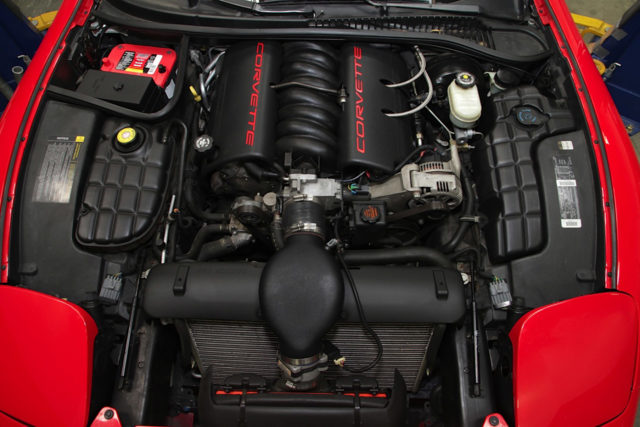
By 1998 the LS1 found its way into the Camaro Z28, and the rest of GM’s V8-powered lineup would follow suit not long after. In the years since, literally millions of LS-based V8s have been produced. These motors have been instrumental in bringing big power to the masses.
This new block was paired with high-flowing cylinder heads that featured a 15-degree valve angle rather than the 23-degree angle utilized with the Gen II engines, which in turn offered a more direct path to the combustion chambers. In its debut configuration the LS1 offered 345 horsepower and 350 pound-feet of torque, up 15hp and 10lb-ft from the LT4, while also weighing 44 pounds less than the Gen II motor and delivering better fuel economy.
Z06
In 2001, Chevrolet would reach into their sports car’s rich performance history when they debuted the new Z06, a badge not seen on the Corvette since the 1960s. While it served as a successor to the C4’s ZR-1, rather than using a bespoke dual-overhead camshaft design, Chevrolet’s engineers instead tweaked the LS1 for even greater performance, upping the compression, revising the cylinder head design, and installing a more aggressive camshaft along with bigger fuel injectors. The result was the new LS6, which delivered 385 horsepower and 385 pound-feet of torque.
The C5 saw the Z06 badge revived for the first time since the second generation cars, and it elevated the Corvette's performance substantially through chassis tweaks, improved grip and braking, and a reworked LS1 dubbed the LS6.
Though not nearly as exclusive (or expensive) as the ZR-1 had been (and despite being slightly down on power), the new Z06 could out-pace it in virtually every performance metric due in part to the scant 3100-pound curb weight and the rigidity of the fixed-roof coupe. The FRC body style had debuted 1999, initially intended as a budget-friendly alternative to the convertible and targa top cars, but became a performance variant due to being the lightest and most rigid of the three body configurations.
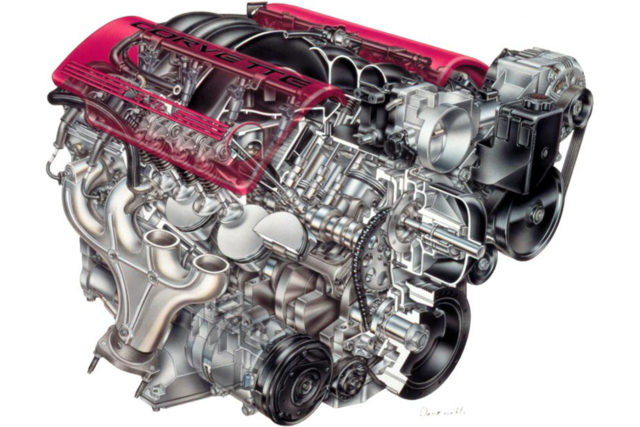
Though it was down on power versus the ZR-1’s DOHC LT5, the LS6 provided enough grunt for the debut Z06 to outpace the former top dog Corvette everywhere aside from top speed. 2002 would bring the power up to ZR-1 levels through revisions for the heads, cam, fueling, and exhaust.
Along with the more potent power plant, the Corvette Z06 received an array of performance upgrades, including the more aggressive FE4 suspension package, wider, model-specific wheels with Goodyear Eagle F1 rubber, improved brake cooling, revised gearing, titanium exhaust, and other go-fast goodies, all for just $500 more than a convertible model.
In 2002 the LS6 would get intake and camshaft revisions, along with and the removal of two of the exhaust system’s four catalytic converters, resulting in a bump in output to 405 horsepower and 400 lb-ft, bring the Z06’s sprint to 60 mph from rest to just 3.9 seconds and its quarter mile time down to the low 12-second range – formidable numbers even by today’s standards.
Legacy
Though it would spent just eight years in production before the fifth generation Corvette would bow out to make room for the C6, Chevrolet would sell nearly a quarter million examples of the C5 throughout its life span, and the car would play a pivotal role in setting the stage for Corvette performance going into the future, not only on the street, but on race tracks around the world as well.
In 1999, Chevrolet would team up with Pratt & Miller in order to bring the fifth generation Corvette back to international endurance racing with the C5-R. Over the years, this purpose-built race car became one of the most dominant forces in GT class racing, securing wins at the 24 Hours of Le Mans, the 24 Hours of Daytona and the 12 Hours of Sebring among numerous others, and established a partnership between Pratt & Miller and the Corvette team’s racing efforts that remains in effect to this day.
In terms of the road-going Corvette, the C5 along with its LS-based power plants would lay the groundwork for the C6, which would receive a revised version of the C5’s platform that was 5.1 inches shorter while sporting a 1.2-inch longer wheelbase. It would also share much of its overall suspension configuration, albeit with revised geometry and optional magnetorheological dampers.
The C6 would also debut the latest iteration of the LS-based V8 engine family, the LS3, which would go on to find homes in everything from the fifth generation Camaro to GM’s full-sized truck and SUV lineup. Along with the rest of the LS engine family, the LS3 would prove instrumental in bringing serious horsepower into the mainstream in a reliable, compact, and light weight package, and would lead to even more potent iterations down the road.
The C6 Z06 and fifth-generation Camaro Z28 both shared the naturally aspirated, 505 horsepower 427-cube LS7.
The first of these was the 7.0-liter LS7, a naturally aspirated, dry-sump, hand built, high-revving monster of a motor that debuted in the 2006 Corvette Z06 churning out 505 horsepower and 470 pound-feet of torque. That engine would later find its way into the giant-slaying fifth generation Camaro Z28 as well.
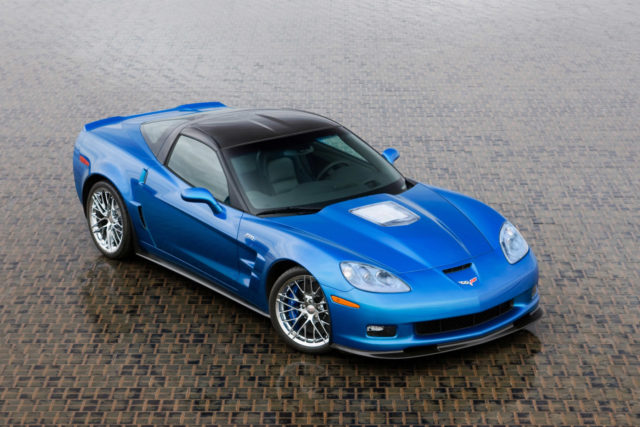
Upon its debut in 2008 (as a 2009 model), the Corvette ZR-1 and its 638-horsepower supercharged LS9 represented the pinnacle of GM performance. The car would set a production car lap record at the Nurburgring that year.
But true culmination of GM’s engineering efforts with the LS3 engine wouldn’t be seen until the C6 Corvette ZR1 with its supercharged, 6.2-liter LS9 engine. Generating 638 horsepower by way of an Eaton blower and host of performance revisions, the LS9 was the most production engine ever built by GM upon its debut.
Due to both their performance and adaptability for different applications, motors like the LS3, LS7 and LS9 remain popular choices for engine swaps to this day, and the millions of LS-based power plants that have been produced since the LS1 debuted in 1997 has ensured that modern V8 horsepower should be readily available to those looking to get reliable Chevy small block power for decades to come.



